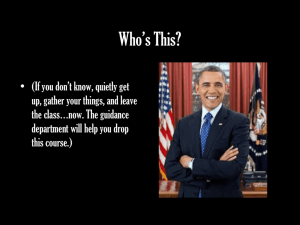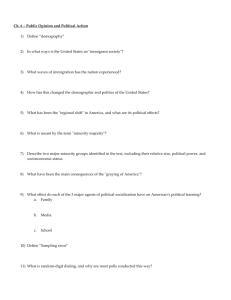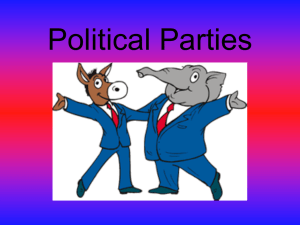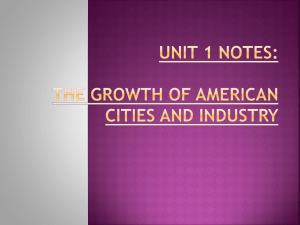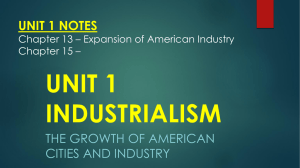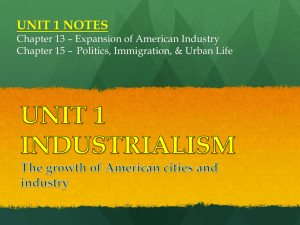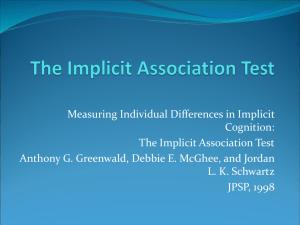WRITE THIS DOWN!
advertisement
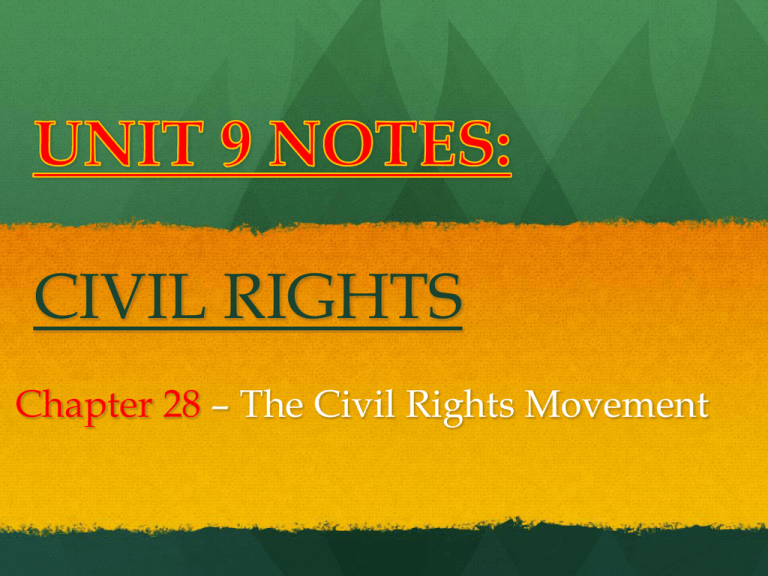
CIVIL RIGHTS Chapter 28 – The Civil Rights Movement George Washington; Federalist (1788) John Adams; Federalist (1796) Thomas Jefferson (1800) James Madison (1808) James Monroe (1816) John Quincy Adams (1824) Andrew Jackson; Democrat (1828) Martin Van Buren; Democrat (1836) William Henry Harrison; Whig (1840) John Tyler; Whig (1841) James K. Polk; Democrat (1844) Zachary Taylor; Whig (1848) Millard Fillmore; Whig (1850) Franklin Pierce; Democrat (1852) James Buchanan; Democrat (1856) Abraham Lincoln; Republican (1860) Andrew Johnson; Democrat (1865) Ulysses S. Grant; Republican (1868) Rutherford B. Hayes; Republican (1876) James Garfield; Republican (1880) #21 - … Chester A. Arthur; Republican (1881) Grover Cleveland; Democrat (1884) Benjamin Harrison; Republican (1888) Grover Cleveland; Democrat (1892) William McKinley; Republican (1896) Theodore Roosevelt; Republican (1901) William Howard Taft; Republican (1908) Woodrow Wilson; Democrat (1912) Warren G. Harding; Republican (1920) Calvin Coolidge; Republican (1923) Herbert Hoover; Republican (1928) Franklin D. Roosevelt; Democrat (1932) Harry S. Truman; Democrat (1945) Dwight D. Eisenhower; Republican (1952) John F. Kennedy; Democrat (1960) Lyndon B. Johnson; Democrat (1963) America: Pathways to the Present Chapter 28: The Civil Rights Movement (1950–1968) Section 1: Demands for Civil Rights Section 2: Leaders and Strategies Section 3: The Struggle Intensifies Section 4: The Political Response Section 5: The Movement Takes a New Turn CORE OBJECTIVE: Examine the issues of racial and gender equality in the struggle to achieve civil rights. Objective 8.3: Describe forms of protest civil rights groups used and explain the obstacles and reactions they had to overcome. Objective 8.4: Explain the political response to the civil rights movement from President’s Kennedy and Johnson. Chapter 28 SECTION 3 THE STRUGGLE INTENSIFIES World War I spreads to several continents and requires the full resources of many governments Sit-ins Challenge Segregation CORE created the sit-in in 1943 as a tactic to desegregate the Jack Spratt Coffee House in Chicago. The sit-in became a common, and powerful, tactic of the civil rights movement. During a sit-in, protesters sat in a segregated public place & refused to leave until they were served. Sit-ins brought strong reactions in some places. People opposed to desegregation would sometimes mock, beat, or pour food on the protesters. Many sit-in participants were arrested and sent to jail. The Freedom Rides The Purpose of the Rides The 1960 Supreme Court case Boynton v. Virginia expanded the earlier ban on bus segregation to include bus stations and restaurants that served interstate travelers. In 1961, CORE and SNCC organized Freedom Rides to test southern compliance with travel integration. RIDER VIOLENCE Violence Greets the Riders Although the freedom riders expected confrontation, the violence which greeted a bus in Anniston, Alabama, was more than they had anticipated. A heavily armed white mob disabled the bus, sets it on fire, then beats the riders. Americans were horrified by the violence which had greeted the bus in Anniston, Robert Kennedy pressured the ICC to prohibit segregation in all interstate transportation. Integration at “Ole Miss” In 1961 James Meredith sues Ole Miss for rejecting his admission – The Supreme Court rules for the University to accept his application When Meredith was rejected, he sought help from the NAACP. The NAACP argued that Meredith’s application had been rejected on racial grounds. When the case reached the Supreme Court, Meredith’s claim was upheld. Meredith continued to face problems as he enrolled at Ole Miss. Mississippi Governor Ross Barnett personally blocked Meredith’s way to the admissions office, and violence erupted on campus. The situation became a standoff between the governor and the Justice Department. President Kennedy sent federal marshals to escort Meredith around campus. Another Example: University of Alabama http://www.youtube.com/watch?v=YgbNc-9Di7k LETTER FROM JAIL In April 1963, Martin Luther King joined the Reverend Fred Shuttlesworth in a civil rights campaign in Birmingham, Alabama. Birmingham city officials ordered protesters to end a civil rights march, when they didn’t Dr. King and others were arrested. While in Birmingham Jail, King wrote a famous letter defending his tactics and his timing. o http://www.youtube.com/watch?v=GQJpj5JSq94 Clash in Birmingham King was released more than a week later and continued the campaign, making the difficult decision to allow young people to participate. Police attacked the marchers with fire hoses, police dogs, and clubs. As television cameras captured the violence, Americans around the country were horrified. https://www.youtube.com/watch?v=-0lD37bq8YI The Struggle Intensifies— Assessment What was the purpose of the Freedom Rides? (A) To test southern compliance with desegregation laws (B) To encourage Birmingham Jail to free Martin Luther King, Jr. (C) To support James Meredith’s admission to Ole Miss (D) To protest police treatment of Birmingham marchers How did the President and Attorney General respond to violence against civil rights activists? (A) They arrested their leaders. (B) They encouraged peaceful protests. (C) They sent federal marshals to protect them. (D) They ignored their demonstrations. The Struggle Intensifies— Assessment What was the purpose of the Freedom Rides? (A) To test southern compliance with desegregation laws (B) To encourage Birmingham Jail to free Martin Luther King, Jr. (C) To support James Meredith’s admission to Ole Miss (D) To protest police treatment of Birmingham marchers How did the President and Attorney General respond to violence against civil rights activists? (A) They arrested their leaders. (B) They encouraged peaceful protests. (C) They sent federal marshals to protect them. (D) They ignored their demonstrations.
